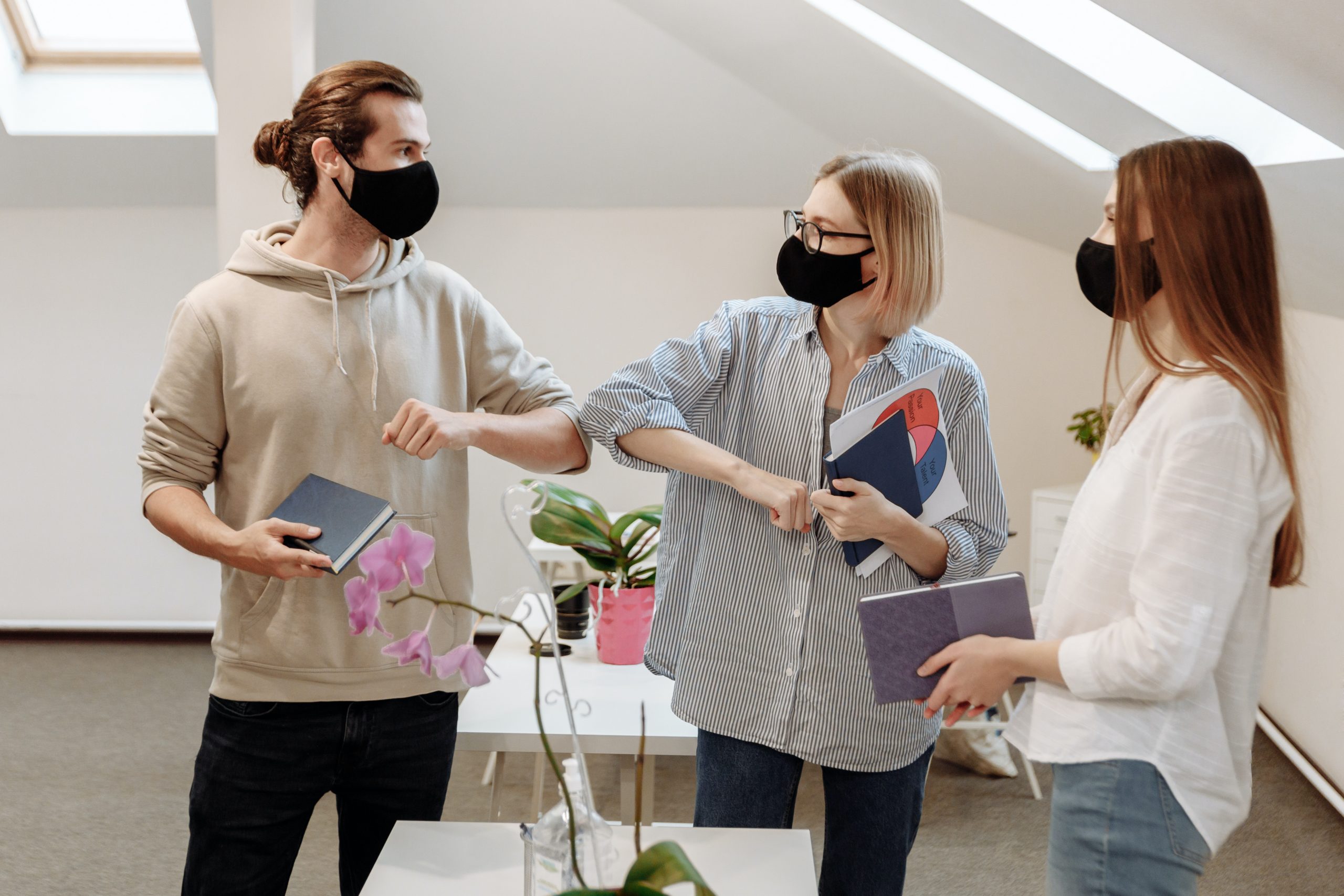As summer draws to a close and restrictions eased, the mass return to the office is imminent for countless businesses and employees across the UK.
Regardless of sector and size, most organisations will have plenty of common ground as they carefully plan strategies to encourage their workforces back to one centrally-located, collaborative space.
Of course the Pandemic has irrevocably changed attitudes at all levels of business, and this presents a unique set of new challenges and requirements, which need careful consideration to strike a balance between staff comfort and safety, and a productive working environment.
It’s something which I’m sure is on the mind of many HR professionals up and down the UK, as much as it is for those (like us) involved in the design and fit-out of the office interior.
There’s no doubt, as the Government encourages us all back to our city centres, it’s a priority for all of us.
The extent of this conundrum was discussed at a roundtable we recently hosted on the Post-COVID office. Bringing together leading professionals from the commercial architecture, design, asset management and HR world we sought to get to the heart of the issue.
From the 90 minute conversation, it became clear, a big part of the solution could be delivered within the design of the office space itself. So here, I want to delve into the key findings which, I hope, will provide some insight into how to plan a ‘match-ready’ office space which will entice staff back.
Testing the waters
Inevitably, there are two sides in all this. No one is expecting the return to the office to be plane sailing. Following many months of uncertainty and COVID case spikes, it’s only natural that anxiety levels amongst employees are sky-high, as they’re asked to begin to commute into city centres once more.
For employers, there’s a huge amount at stake financially. Many will have spent large sums of money renovating their existing, or new, office spaces to ensure they’re comfortable, practical and importantly, physically covid-safe for their employees to return to.
It’s understandable they want to get the most from the investment, but a sensitive approach must be taken.
Understanding physical & psychological safety
A fine degree equilibrium is essential, and it’s important for business owners to keep the psychological safety of their employees in mind as they return to work. Employers need to be mindful of apprehension to return, and there is likely to be a window where employees will have to readjust to working life and a new routine. Physical and psychological safety therefore should be carefully balanced and reflected in the design of the office space.
As employers there’s no doubt we need to act in a way which places the individual employee at the heart of our return-to-the-office strategy, providing flexibility is essential, as is ensuring everyone is treated equally and fairly.
All these subtle, human factors need to be considered in the design and layout of the space.
A new day-to-day
Fundamentally we need to entice workers back in, rather than just expecting them to return.
The pandemic has shifted perceptions of the physical office, what was once considered by many as a home from home, is now viewed as a nuisance or health risk. It is these attitudes that have forced businesses to rethink their office design requirements.
We must not apply the same set of rules that worked pre-pandemic. As one roundtable participant put it, “Designing spaces which were adequate two years ago is no longer an option. The landscape has irrevocably changed and we need to respond with spaces which meet contemporary expectations.”
Adjusted priorities
Certainly, this seismic, cultural shift has instigated change in office space layout and fit-out, and it’s something businesses need to take seriously. As an HR director at the same event put it, “it can now be the difference between retaining or attracting employees, or a company deciding to sign a lease on a services space”.
Small, stuffy offices with inadequate lighting and poor facilities are now unacceptable as they are (rightly) perceived to negatively affect physical and mental wellbeing.
Workers want to feel they’re looked after by the environment they’re in, as much as by the company they work for. That’s why people-centric layouts, and fit-out, are so crucial.
Invisible Touch
The good news is, retrofitting can be a very simple process. However, in line with the above, a certain degree of conscientiousness, empathy, intuitiveness must be at the heart of the brief.
It’s about much more than throwing up partitions (although these are important, for a wide number of reasons). It needs to be carefully curated, and working closely with a commissioned architect or designer will help establish an appropriate layout which make employees feel safe, secure and motivated.
Employee-centric culture
It’s clear our office spaces need to become a lot more personal, centred around the individual employee, creating a setting in which they can be their most productive.
When approaching a Post-COVID re-fit, maybe consider the following questions: What can be done to ensure the office is tailored to the new needs of the workforce? Does the current design get the best out of employees? If not, what needs to change?
It requires some investment of time and money, but it’s this approach to office design that will encourage people back into the office. As businesses, we must aim to develop happy, healthy, fully functional and inspiring workplaces for businesses and the people who work in them. Now as the return to the office begins, we’d like to make this mantra standard across UK plc.
Ultimately, only by approaching the journey this way will ensure workers are just as happy and comfortable working in the office as they are at home.









